|
|
|
Charles Burchfield and cuneiform
Saturday, May 5 2007
setting: Room 11, Redwood Motel, North Adams, Massachusetts
I'm the kind of guy who, were I to go on a vacation all by myself, might well sit in my hotel room watching cable the whole time. Gretchen is the kind of gal who likes to research what shows are in what nearby art galleries so we can be sure to see them, even if they aren't especially to her liking. This morning we drove down to the heart of North Adams to visit the Massachusetts Museum of Contemporary Art (Mass MOCA). We'd visited Mass MOCA sixteen months ago on our way back from buying our second Honda Civic (the car we were doing this road trip in), so I've already described the place: the beautiful abandoned red-brick textile factories converted into galleries, the wooden columns and steel-and-cable tension trusses nearly as strong as the day they were installed well over a hundred years ago.
Since two of the galleries were closed for the installation of exhibits, admission was 50% off. The main exhibit to see was one called "The Believers," about artists with quirky visions of the world that they're seeking to aid with their art. A collection of runways built by Polynesian cargo cults would have been ideal for this exhibit, but not even Mass MOCA has galleries that large. Instead we were treated to a precious set of objects made by an artist named Emory Blagdon mostly from meticulously twisted wire. Blagdon thought of himself more as an inventor than as an artist; he believed his wire constructions (which often included armature laminates) had the power to heal. Another artist named Theo Jansen had built enormous prototype creatures from PVC pipe which he hopes to release into self-sustaining herds roaming beach habitats.
For lunch we went to the Café Latino, which is right there on the Mass MOCA grounds. It's a hip place with anomalously unfinished formica tables (the laminate is missing from the sides, exposing thick slabs of plywood). Our waitress was a little grating, what with her over-the-top enthusiasm (which I described as "many pieces of flair on her personality"). It being Cinco de Mayo, we were told that the mojito Gretchen ordered was a "popular item." I ordered a Negra Modelo and it didn't cost any more than it would have cost in the Pupuseria in Kingston. I also ordered fish tacos, which ended up being the best I've ever had on the East Coast (the only other fish tacos I've had on the East Coast were at a franchise of Baja Fresh — many years after achieving popularity in California, they're still mostly unknown here).
On our drive back to Kingston, we stopped again in Williamstown to get some food to go from the Thai restaurant next door to the Spice Root. While waiting for that to be prepared, we walked through the Williams College Art Museum. I'd originally been reluctant to go because I was now experiencing museum fatigue, but since we had twenty minutes to kill it seemed like the best way to pass the time.
I saw two things in the museum that made me glad I came. The first was a painting by Charles Burchfield, an artist I haven't thought about since I started using the web. I knew him from one stunning painting that was included anomalously in a world atlas (or was it a psychology text book?). His landscapes are full of strange energy fields, with light beams setting tree boughs and clouds on fire. He often allows negative space to intrude into and interrupt the edges of his natural objects, making everything seem to hum with either life or spirituality. That preceding link didn't have many representative paintings, so I'll send you to Google Images, where the first page of results is a delightful acid trip. I always wanted to paint like Charles Burchfield, but I was too tempted to make my surfaces look as if they'd been made of polished plastic instead of Burchfield's glowing plasma. Unfortunately, the photo I took of the Burchfield painting in the Williams College Art Museum was ruined by motion blur, making it look perhaps more Burchfieldian than even the original.
The second thing that struck me in this museum was a pair of beautiful Babylonian reliefs, both of larger-than-life human figures (though one had the head of an eagle). Across both was some sort of long-winded inscription written in cuneiform. In those days there was no established tradition for how to incorporate text with images, so the text flowed across the figures, breaking only when it ran into fussy details in the background image. A staff of straight horizontal lines had been cut in the stone, evidently to facilitate the straightness of the text.
On the drive home, we were treated to an hour of the latest This American Life broadcast from WAMC, which started when we got on 787 in Troy and concluded moments after we pulled into our driveway. Who says there is no God? It had been the one about the Ten Commandments.
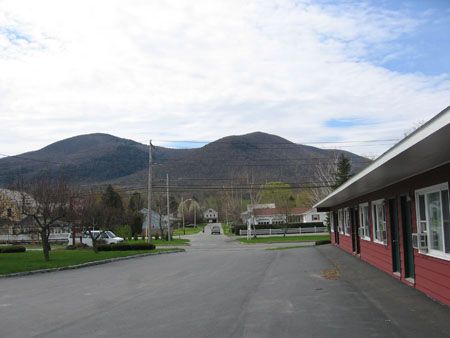
View from the parking lot of the Redwood Motel, North Adams, MA.
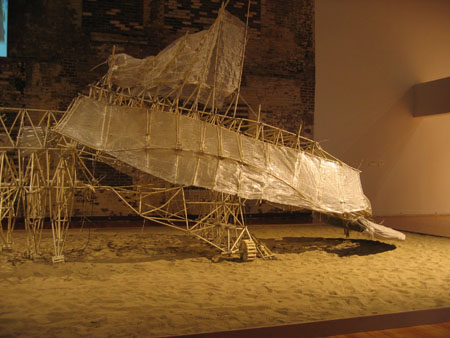
One of Theo Jansen's enormous beach critters at Mass MOCA.
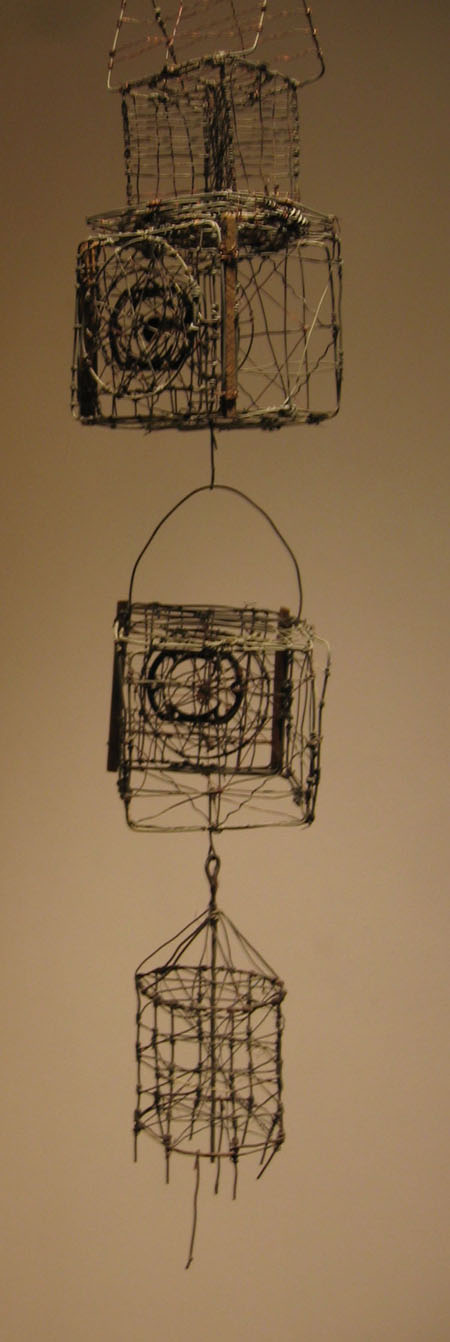
One of Emory Blagdon's wire "healing machines" at Mass MOCA.
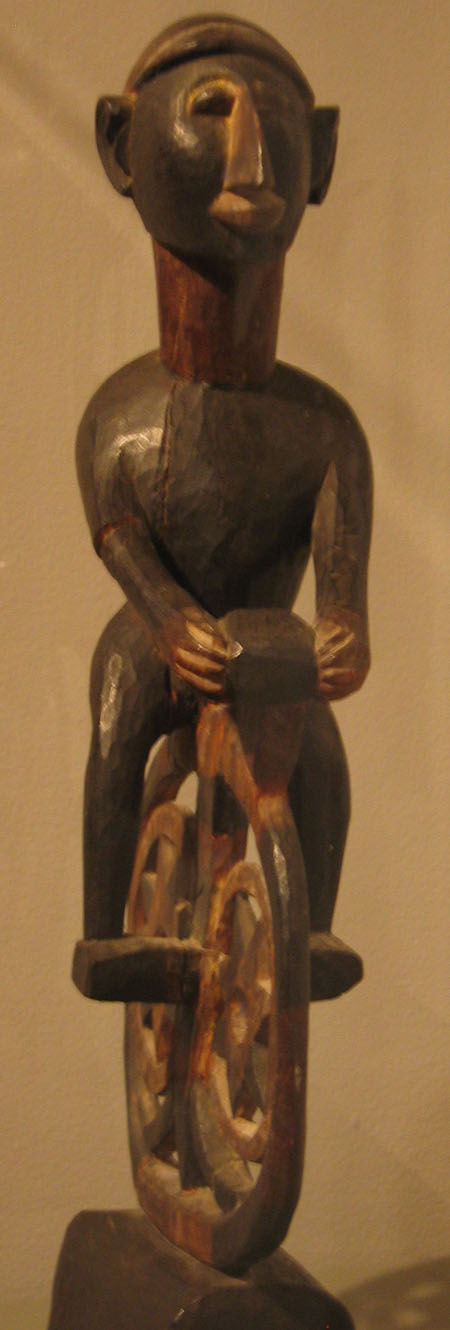
A sculpture at the Williams College Art Museum.
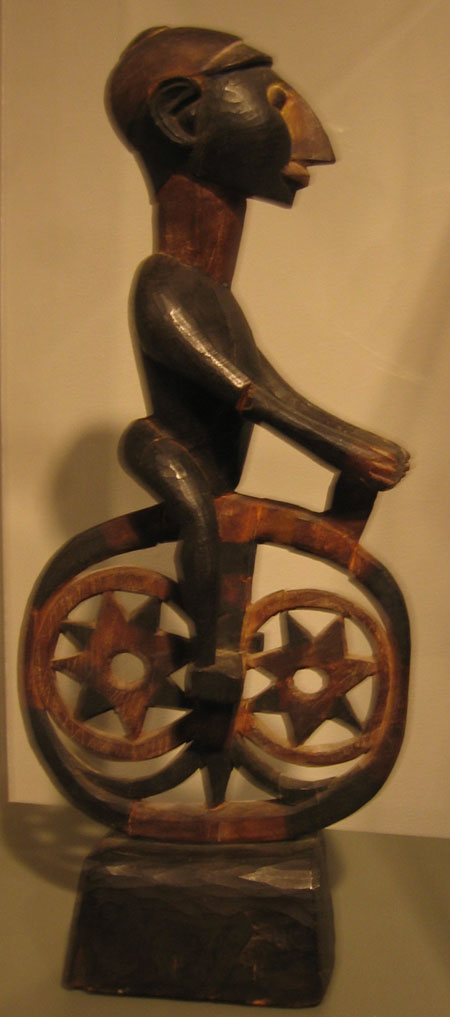
Another view. Note the slight motion blur. I turn the flash off in museums, where photography is usually banned, but then I have to hold the camera still and I can't because I drink too much caffeine.
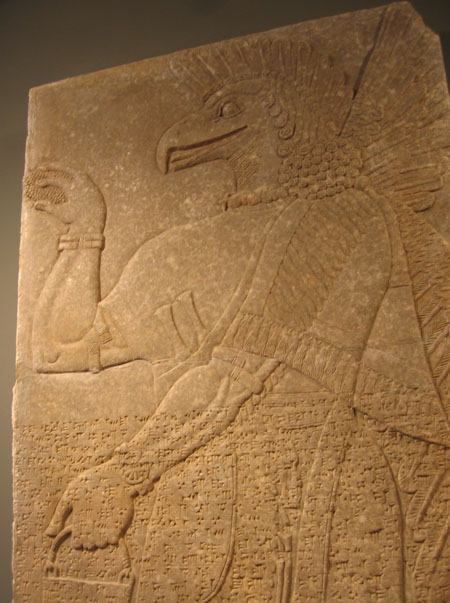
An eagle-headed Babylonian relief. (This one survived Operation Iraqi Freedom by not being in Iraq when Saddam fell.)
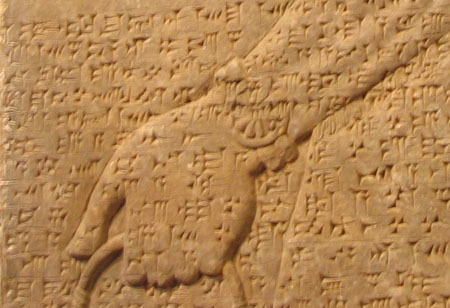
A close up of that cuneiform.
For linking purposes this article's URL is:
http://asecular.com/blog.php?070505 feedback
previous | next |






